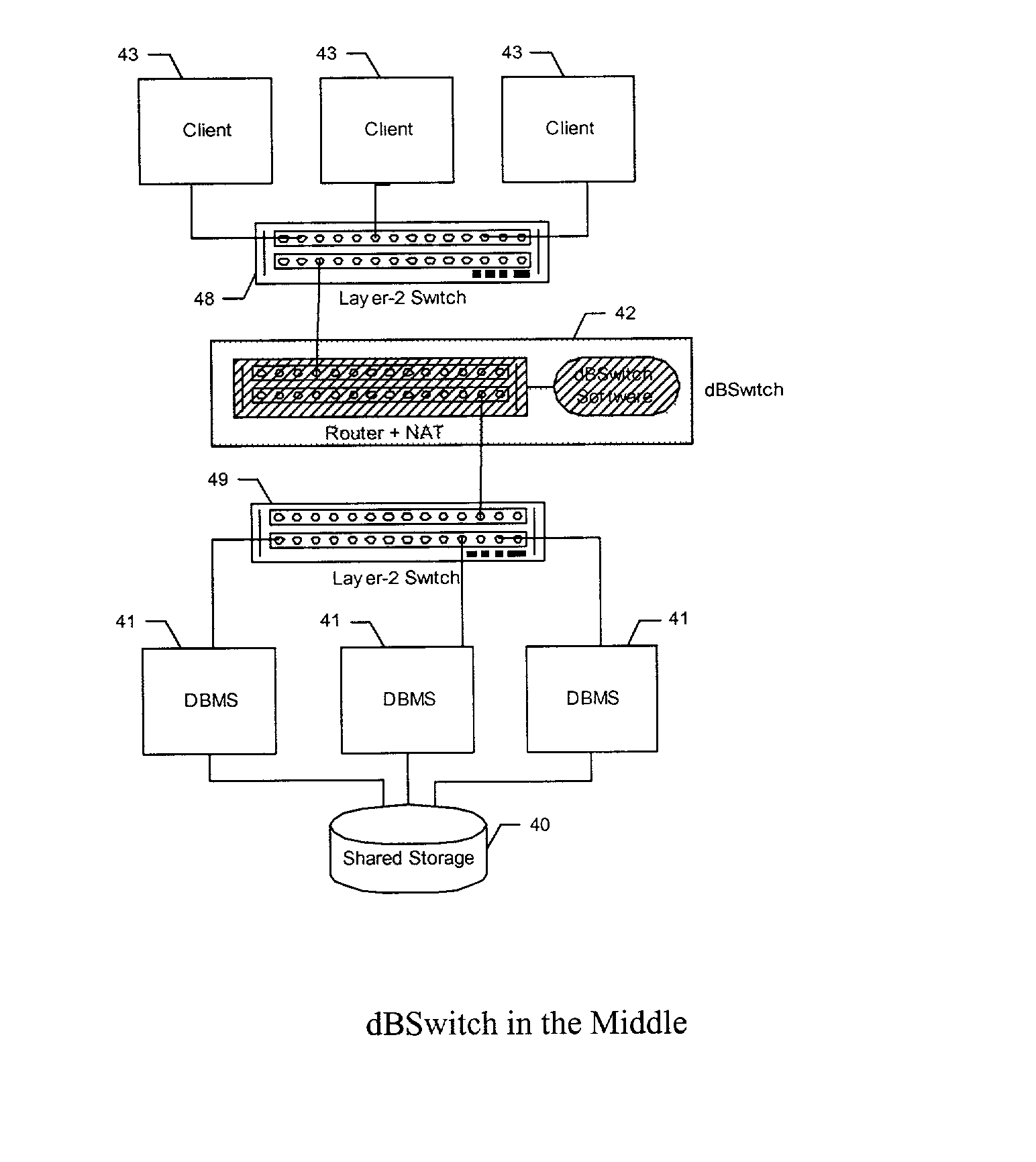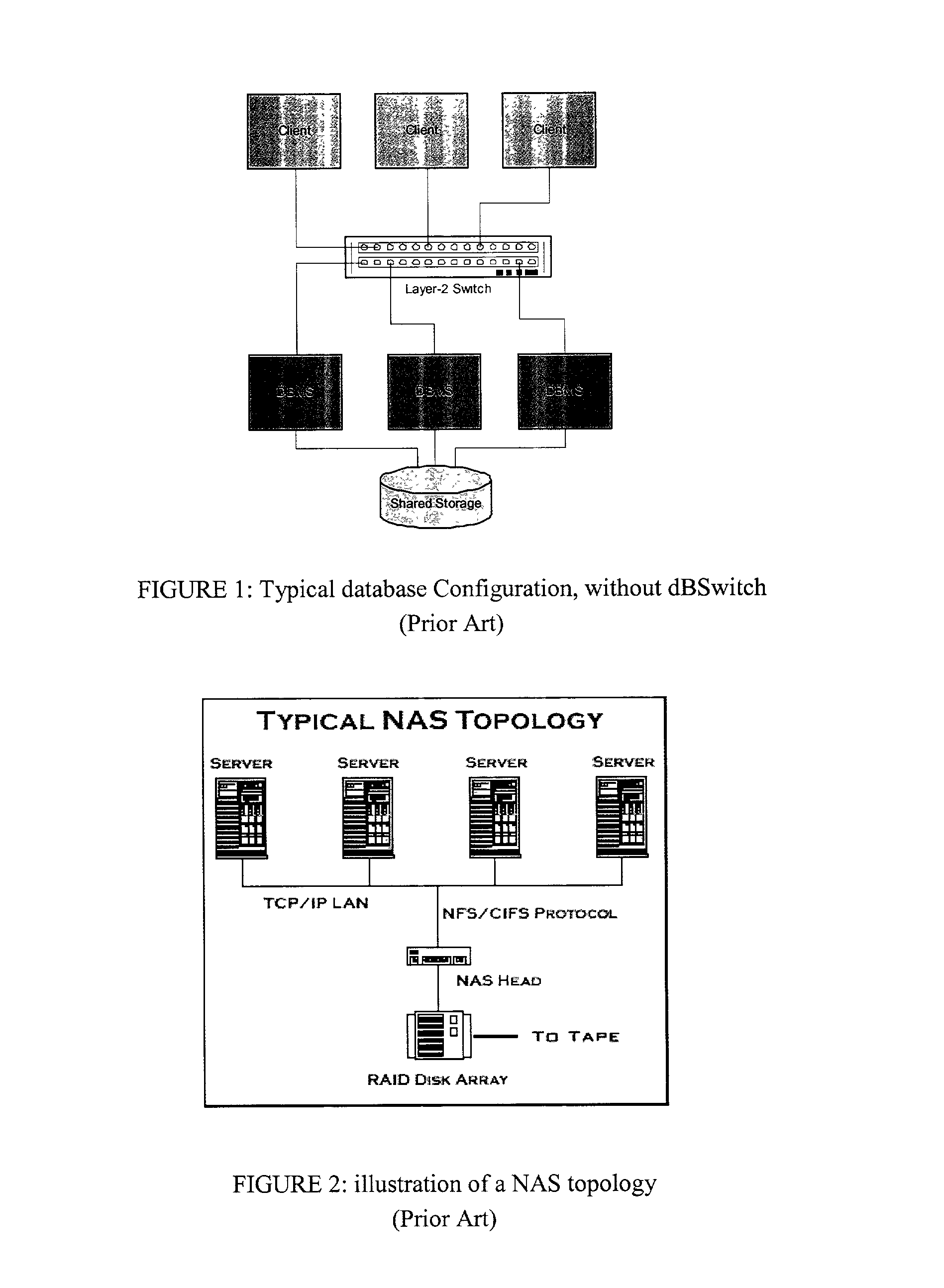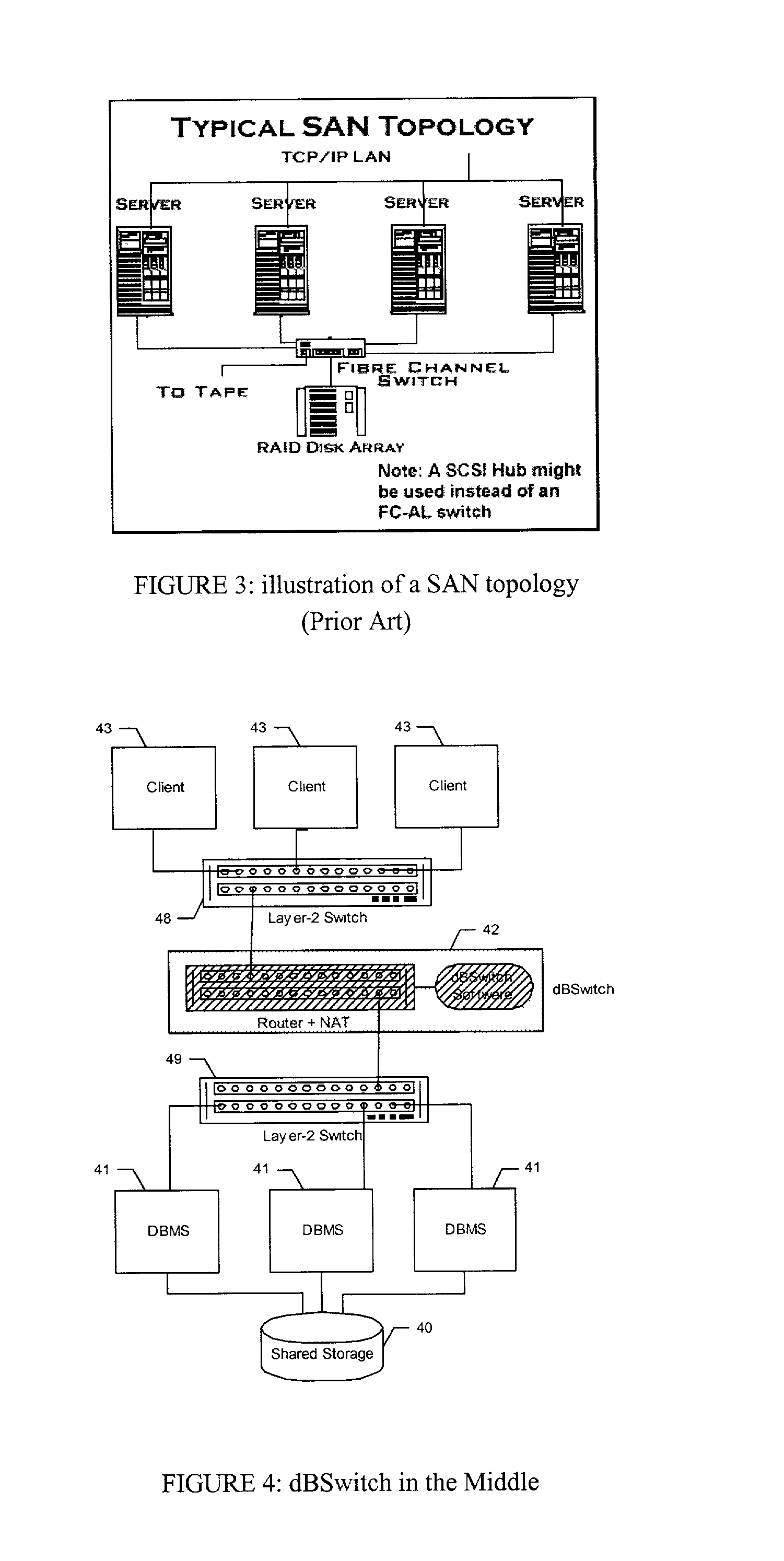Database Switch enabling a database area network
a database and switch technology, applied in the field of database, can solve the problems of high cost, complex management, and limited scalability, and achieve the effects of reducing the number of switches, and increasing the number of data centers
- Summary
- Abstract
- Description
- Claims
- Application Information
AI Technical Summary
Problems solved by technology
Method used
Image
Examples
example 2
[0100] Example 2 is similar to example 1, but clients, servers and the dBSwitch on the same subnet. In the detailed list below; we also included the virtual addresses as part of the same subnet, demonstrating the indifference of the process to the actual network configuration.
2 Destination Source Direction Type IP Port IP Port Comment 1 Client to Open 172.0.0.105 6000 172.0.0.1 8000 dBSwitch session query 1 dBSwitch Open 172.0.0.105 6000 172.0.0.1 8000 to Server session query 2 Server to Open 172.0.0.1 8000 172.0.0.105 6000 Contains server client session Virtual IP response (172.0.0.105) and port (7300) 3 Client to Data 172.0.0.105 7300 172.0.0.1 8010 dBSwitch 3 dBSwitch Data 172.0.0.105 7300 172.0.0.1 8010 to Server 4 Server to Data 172.0.0.1 8010 172.0.0.105 7300 Client
example 3
[0101] In example 3 clients specify Virtual Database Service IP addresses but each database server is assigned a single physical IP address. Clients and servers are on separate subnets. The dBSwitch performs routing as well as address translation (NAT), replacing the virtual IP specified in the client request with the physical IP of the database server associated with that service. We are assuming the indirect connection method used with the Oracle DBMS.
[0102] Packet Flow is as Follows:
[0103] 1. Initial Connection--Client to Server
[0104] The initial connection request goes from the client to the dBSwitch. The dBSwitch performs 1-way NAT, changing the destination IP and port to the IP of the database server that provides the requested service and the port number of the Oracle listener for that instance. The dBSwitch then sends the packet to the same IP and port.
[0105] 2. Initial Connection--Server to Client
[0106] The listener sends back to the client a packet containing the IP addres...
example 4
[0113] Example 4 is similar to example 3, but we are assuming a direct connection method, as is the case with the DB2 and SQL Server DBMS (see background). Hence clients always send database packets to the virtual IP address, and the dBSwitch performs NAT on all traffic.
4 Destination Source Direction Type IP Port IP Port Comment 1 Client to Query 172.0.0.10 1430 192.0.0.1 8000 dBSwitch 1 dBSwitch Query 172.0.0.103 4535 192.0.0.1 8000 to Server 2 Server to Response 192.0.0.1 8000 172.0.0.103 4535 dBSwitch 2 dBSwitch Open 192.0.0.1 8000 172.0.0.10 1430 to Client session response
[0114] Non-Database Packet Routing
[0115] Non-database packets can be routed directly from client to database server and back, or using any of the methods described herein for routing database packets though the dBSwitch, for example, direct server return or round trip routing.
[0116] With the Virtual Database Service IP addressing scheme, non-database packets can be directed in two ways, as illustrated in FIG. 7...
PUM
 Login to View More
Login to View More Abstract
Description
Claims
Application Information
 Login to View More
Login to View More - R&D
- Intellectual Property
- Life Sciences
- Materials
- Tech Scout
- Unparalleled Data Quality
- Higher Quality Content
- 60% Fewer Hallucinations
Browse by: Latest US Patents, China's latest patents, Technical Efficacy Thesaurus, Application Domain, Technology Topic, Popular Technical Reports.
© 2025 PatSnap. All rights reserved.Legal|Privacy policy|Modern Slavery Act Transparency Statement|Sitemap|About US| Contact US: help@patsnap.com



